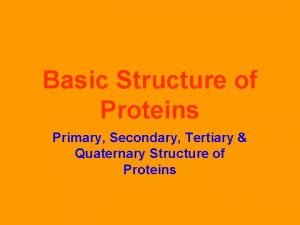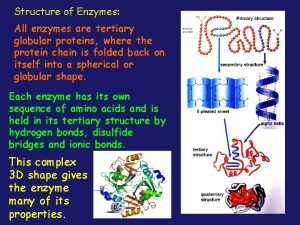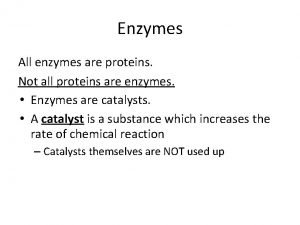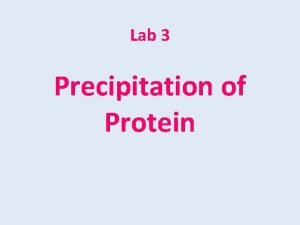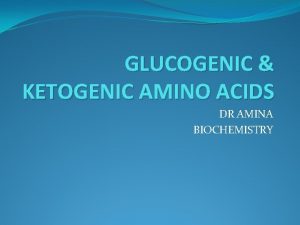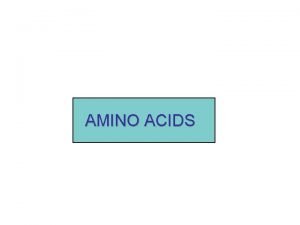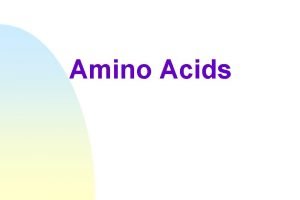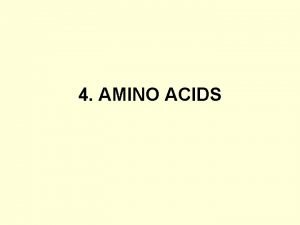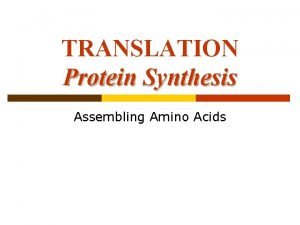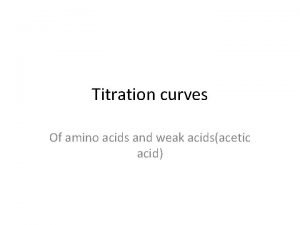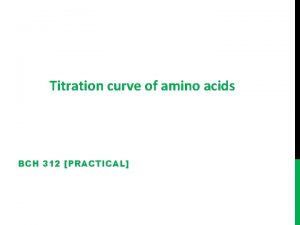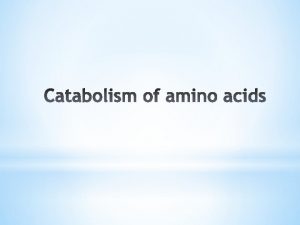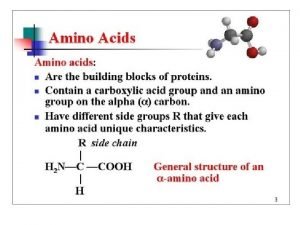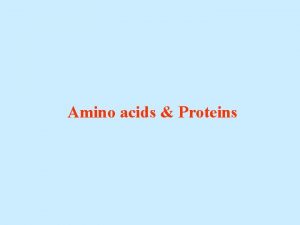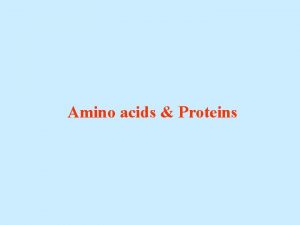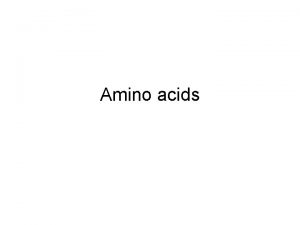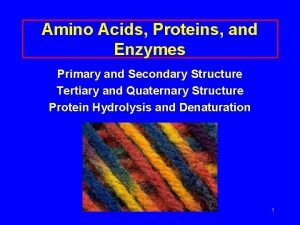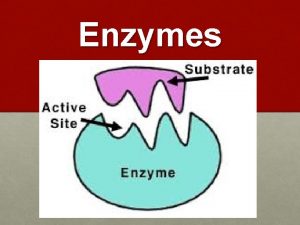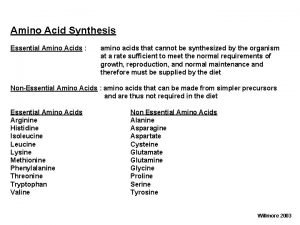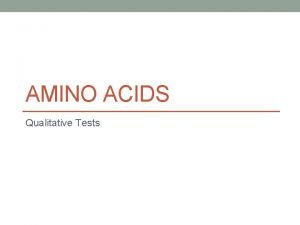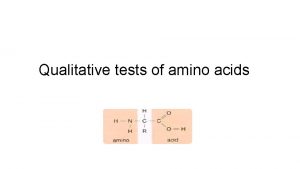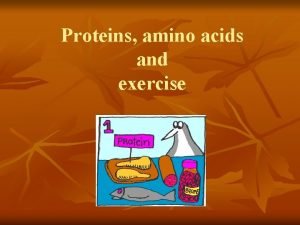Amino Acids Proteins and Enzymes Primary and Secondary












- Slides: 12

Amino Acids, Proteins, and Enzymes Primary and Secondary Structure Tertiary and Quaternary Structure Protein Hydrolysis and Denaturation 1

Primary Structure of Proteins The particular sequence of amino acids that is the backbone of a peptide chain or protein Ala-Leu-Cys-Met 2

Secondary Structure – Alpha Helix • Three-dimensional arrangement of amino acids with the polypeptide chain in a corkscrew shape • Held by H bonds between the H of –N-H group and the –O of C=O of the fourth amino acid along the chain • Looks like a coiled “telephone cord” 3

Secondary Structure – Beta Pleated Sheet • Polypeptide chains are arranged side by side • Hydrogen bonds form between chains • R groups of extend above and below the sheet • Typical of fibrous proteins such as silk 4

Secondary Structure – Triple Helix • Three polypeptide chains woven together • Glycine, proline, hydroxy proline and hydroxylysine • H bonding between –OH groups gives a strong structure • Typical of collagen, connective tissue, skin, tendons, and cartilage 5

Tertiary Structure • Specific overall shape of a protein • Cross links between R groups of amino acids in chain disulfide –S–S– + ionic –COO– H 3 N– H bonds C=O HO– hydrophobic –CH 3 H 3 C– 6

Globular and Fibrous Proteins Globular proteins “spherical” shape Insulin Hemoglobin Enzymes Antibodies Fibrous proteins long, thin fibers Hair Wool Skin Nails 7

Quaternary Structure • Proteins with two or more chains • Example is hemoglobin Carries oxygen in blood Four polypeptide chains Each chain has a heme group to bind oxygen 8

Protein Hydrolysis • Break down of peptide bonds • Requires acid or base, water and heat • Gives smaller peptides and amino acids • Similar to digestion of proteins using enzymes • Occurs in cells to provide amino acids to synthesize other proteins and tissues 9

Hydrolysis of a Dipeptide 10

Denaturation Disruption of secondary, tertiary and quaternary protein structure by heat/organics Break apart H bonds and disrupt hydrophobic attractions acids/ bases Break H bonds between polar R groups and ionic bonds heavy metal ions React with S-S bonds to form solids agitation Stretches chains until bonds break 11

Applications of Denaturation • • • Hard boiling an egg Wiping the skin with alcohol swab for injection Cooking food to destroy E. coli. Heat used to cauterize blood vessels Autoclave sterilizes instruments Milk is heated to make yogurt 12
 Amino acids are joined together in proteins by
Amino acids are joined together in proteins by Primary vs secondary vs tertiary vs quaternary structures
Primary vs secondary vs tertiary vs quaternary structures All enzymes are globular proteins
All enzymes are globular proteins Not all enzymes are proteins
Not all enzymes are proteins Precipitation of proteins by strong mineral acids
Precipitation of proteins by strong mineral acids Is valine ketogenic or glucogenic
Is valine ketogenic or glucogenic Why is lysine basic
Why is lysine basic Gluconeogenic amino acids
Gluconeogenic amino acids Difference between hydrophobic and hydrophilic amino acids
Difference between hydrophobic and hydrophilic amino acids Dehydration synthesis of amino acids
Dehydration synthesis of amino acids Arginine titration curve
Arginine titration curve Titration curve of amino acids
Titration curve of amino acids Deamination of amino acids
Deamination of amino acids

